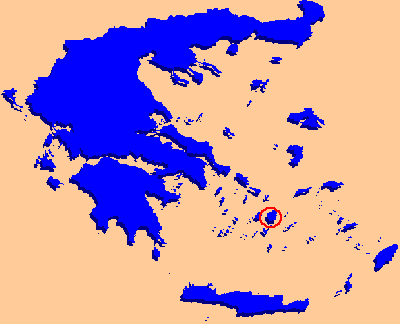 |
Greece Property for Sale - Real Estate In Greece Buy & Sell |
| Naxos Property & Houses For Sale - Real Estate In Greece 0 Property(s) Found - Page 1 of 0 - Updated: 4/27/2024 |
|
FEATURED PROPERTIES: Ikaria - Armenistis New Maisonettes Price: €209,000 - 125 m2 Bedrooms: 3 Baths: 2  |
NAXOS
Naxos Characteristics
Naxos is the largest and most fertile of the Cyclades. It has 428 sq. km of land mass and 148 km of coast. With a population of 20,000, it lies 103 nautical miles from Piraeus. Naxos' Mt. Zas (also known as Mr. Zeus or Mt. Zefs) is the highest (1,004 meters) in the Cyclades. It is a green island with many sandy beaches, a lively port, a mountainous interior, many charming small villages and a number of archeological monuments. Olives and citrus groves flourish here. The citron thrives on Naxos. In antiquity the citron was a symbol of affluence and fertility. Island Features
The locals grow much of their own food in verdant valleys. Excellent wine and kitron are produced here. Potatoes are a large crop and the main export. The west coast is almost uninterruped beach and popular with tourists. But in the mountainous interior it's much quieter and lures the romantic wanderers and poets (most notably, Lord Byron). Ruins from the ancient Greeks are sprinkled everywhere on Naxos. Towns and BeachesNaxos Town
The main town is Naxos Town or 'Hora'. Near the water front you see statues of two famous sons: Michaeli Damiralis and Petros Protopapadakis. The church of Panagia Pantaassa is near the waterfront. It's famous for its icon of the Virgin. The town is deliberately laid out in bewildering, twisting streets which are divided into three neighborhoods: Bourgos, Evraiki and Kastro. In Bourgos, where the Greeks lived, you'll see the Metropolis of Zoodochos Pigi, an Orthodox Cathedral from the 18th Century. It sits atop older temples and churches that archeologists just itch to dig out but are not allowed to touch. Evraiki was a Jewish neighborhood. At the top, high-walled Kastro contains one of the town's original seven towers. This is where the Venetian Catholic nobility lived and has stunning houses. There are Venetial coats of arms in view, and a 13th Century Catholic Cathedral. Kastro has the Archaeology Museum with numerous artefacts dating back to the 5th Century. Near it, the Venetian Museum contains a traditional Kastro house. The Naxos Cultural Center has exhibitions over the summer. A causeway leads from Naxos Town to the Grotta area to the north, named for its many sea caves. The southwest coastTo the south of Naxos Town is the golden sand and lovely bay of Agios Georgios. The road leads next to Livadi plain where potatoes are grown. Near the airport at Iria, the Temple of Dionysos was discovered. The next beach is Ag. Prokopios, followed by Ag. Anna. Ag. Anna is the most popular beach because it is nicely sheltered from the sometimes annoying meltemi winds. Plaka, just south of that, has a very good beach and plenty of watersports options. Further south the white sandy beaches of Parthena, Mikri Vigla, Sahara, and Kastraki offer surfing, swimming and brilliant clear water. Above the road, you can see Pirgos Oskellou, an old Mycenaean fortress. The last and most remote beach on the southwest coast is beyond Kastraki at Cape Kouroupia. Inland VillagesSouthward from Naxos Town, you come first to Galanado where there is a restored Venetian Tower and the Church of St. John. Take the short walk toward Ano Sangri to see the island's first cathedral (which was dedicated to the patron saint of thieves) at Ag. Mamas. In Ano Sangri, there are Byzantine frescoes and medieval towers. One mile from Ano Sangri, you'll find the Temple of Demeter, built in the 6th Century BC. It's a bit harder walking to go southeast from Ano Sangri to reach the ruins of T'Apalirou, a Byzantine castle high on a rocky hill. From Ano Sangri, the road rises to a verdant plateau where there are several villages. Both the Byzantines and the Venetians built tower houses in Chalki. Chalki (alternate spelling Halki) has two fine frescoed churches, Panagia Protothronis and Ag. Diasoritis. The most striking church on Naxos, Panagia Drossiani with its corbelled domes and excellent frescoes is here. Chalki is in kitron country and the Vallindras Naxos Citron distillery, with it ancient jars and copper stills, is open most mornings. Nearby is good shopping in a very nice ceramics shop called L'Olivier with stoneware, jewelery, artefacts in olive wood and olive products such as candles. West of Chalki is Ano Potamia, a popular spot with Naxians. The main road leads to Filoti on the slopes of Mt. Zas. Filoti is the largest village and boasts amenities such as an ATM booth. They make cheese here and have a Venetian towerhouse and the churches Koimisis tis Theotokou and Panagia Filotissa. There's a sacred cave near the summit of Mt. Zas where the baby Zeus was once kept, according to legend. The cave is now home to a colony of bats. From Filoti, hike three hours along the west flank of the mountains to reach the isolated and well-preserved Tower of Chimarou. This tower was built by Ptolemy of Egypt. It's made of white marble. The road from Filoti leads to Apiranthos, where you can see more Venetian towers. Apiranthos is considered the most beautiful village on Naxos. It has narrow, winding paths paved with marble. Lord Byron reportedly loved this village so much he said he wanted to die there. You may be lucky enough to see women weaving, or find farmers selling fresh produce. There's a small Cycladic Museum and a Geological and Folklore Museum. From Apiranthos, the road drops to the port of Moutsouna, where you'll find an excellent beach. Inland villages to the north of Naxos Town begin with Melanes, where the ancient marble quarries are. Look for the signpost to the 20 foot high kouros off the road in cypress grove. Near Melanes, in Kourounochori, are the ruins of a Venetian castle: Ag. Thaleleos. A beautiful walk begins at Kourounochori, descending to the Chapel of Artemis and following the Xerotakri River down to Egares. A road links Koronos to Lionas beach, but the main road heading north twists and turns its way to the island's highest village at Komiaki. From this height, there are great views of terraced vineyards. The road leads back down to Apollonas on the coast, where there is a sandy beach. The quarries form steps leading up to a 33 foot kouros from the 7th Century. Appolonas was supposed to be sacred to Apollo and the kouros is believed to been intended for a temple that once stood there. The northwest coastThe road along the north coast heading back to Naxos Town from Apollonas will take you by the isolated beach at Ormos Abram where a marble head sits abandoned on a rock. At Pachia Ammos you can see the 16th Century Monastery of Faneromeni. The northwest coast does have some nice beaches as long as the meltemi isn't blowing. Drinking and DiningNaxos has a buzzing nightlife and many bars. There are excellent restaurants of every description from traditional Greek to Asian, Mexican and more. Be sure to try the famous local wines. AccommodationsSee our greece hotels for a complete look at accommodations available on this island. You'll find many very fine choices. There are also campgrounds on Naxos. History
There is abundant marble of Naxos, giving it the distinction of being the one of the first Greek islands to use marble. It was later one of the more important island exports. The sculptors of Naxos made the lions of Delos and the largest kouros statues ever found. Naxos is famous in myth. The unfinished gateway you see in the photo on the left is from the Temple of Apollo. The gateway is on the island of Palatia, linked to the port by a causeway. Lots of sunset photos get framed in this gateway! HintsIf you like exploring on foot, stop in one of the local bookshops and get Central Naxos – A Guide with Map. Naxos still has an old-fashioned citron distillery, so track some down to try as a traditional liqueur: kitron. The liqueur comes in three strengths with three degrees of sweetness. You can find kitron liqueur in shops near the waterfront. There's good shopping for embroidery and hand-made silver jewelry in Naxos. Seee more pictures of Naxos. Maps
The Complete Details
|
©2024 Real Estate in Greece.net | Contact | | Bookmark Sitemap |


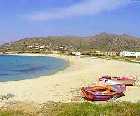
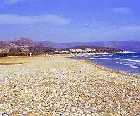

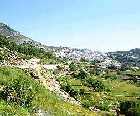
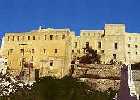
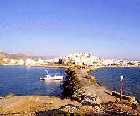
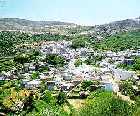

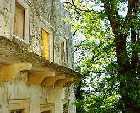
 Legendary, romantic, repleat with power and completely enchanting describe the history of Naxos. Naxos has been inhabited since the Neolithic period and was a cultural center of classical Greece. The name harks back to a son of Apollo named Naxos.
Legendary, romantic, repleat with power and completely enchanting describe the history of Naxos. Naxos has been inhabited since the Neolithic period and was a cultural center of classical Greece. The name harks back to a son of Apollo named Naxos. 